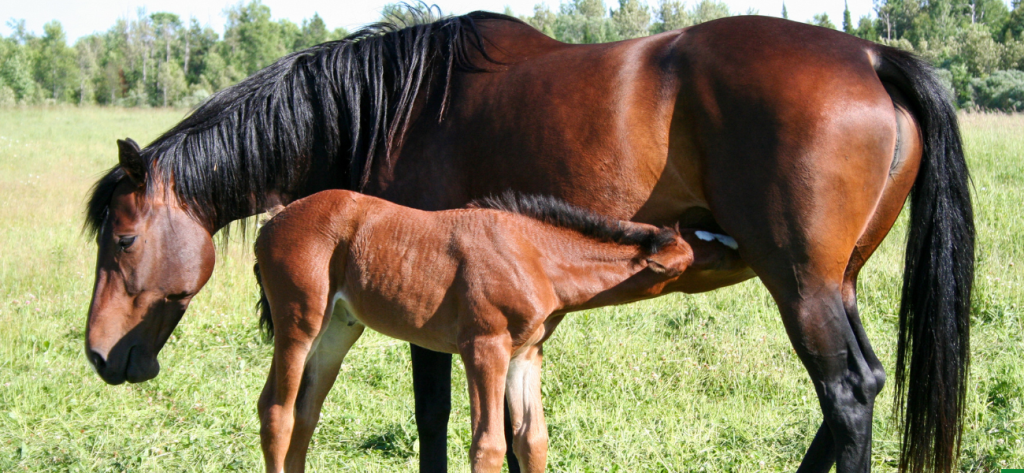Uncategorized
Foal Series: How Does the Newborn Develop its Microflora
How Does a Newborn Develop its Microflora
Traditionally it was thought that any bacteria found in mothers milk was from moms skin or from contamination from the infants mouth (1). However, the detection of live anaerobic and/or DNA from anaerobic species that are found in the gut environment and can not survive in aerobic environments such as skin or mouth suggests that suggests that bacteria in milk is from gastrointestinal origin. This has initiated scientific discussion as to the origin of milk associated bacteria.
Recent research from a variety of research groups highly suggests the presence of a bacterial entero-mammary pathway of bacteria (2). This means that mom’s gastrointestinal bacteria are translocating from her gastrointestinal tract to the mammary gland and subsequent to mothers milk. Mothers milk then is a source of the first bacterial organisms that are to become the newborns gastrointestinal flora. This process is known as translocation or movement from one location to the other (2). Giving the mare Equiotic Foal & Mare before birth is a great way to provide the mare with live lactobacillus reuteri bacteria.
How does this translocation occur? Translocation occurs when: dendritic cells (cells of the gastrointestinal tract that engulf bacteria), present these bacteria to the immune cells of the gastrointestinal tract (3,4), then carry these non-pathogenic bacteria from the gut to the lactating mammary gland. This translocation then provides the newborn with access to critical microflora of the gastrointestinal tract. Lactic acid bacteria are one of the bacteria that can be physiological translocated (5).
Lactobacillus reuteri stains have been identified in breast milk samples. Lactobacillus reuteri is one (if not the most) important probiotic organisms of the gastrointestinal tract. In conclusion, the importance of maternal microflora to the development of the infants microflora cannot be overemphasized. Maintaining a population of lactobacillus reuteri in mom’s gastrointestinal tract before foaling is critical to the health and well being of the foal. Prevention of disease directly and through development of immunity are produced and maintained by an adequate lactobacillus reuteri population.
References: (all listed in MLA format)
1.Costello, Elizabeth K et al. “Bacterial community variation in human body habitats across space and time.” Science (New York, N.Y.) vol. 326,5960 (2009): 1694-7. doi:10.1126/science.1177486 – https://pubmed.ncbi.nlm.nih.gov/19892944/
- Nasidze, Ivan et al. “Global diversity in the human salivary microbiome.” Genome researchvol. 19,4 (2009): 636-43. doi:10.1101/gr.084616.108 – https://pubmed.ncbi.nlm.nih.gov/19251737/
- Rescigno, M et al. “Dendritic cells express tight junction proteins and penetrate gut epithelial monolayers to sample bacteria.” Nature immunologyvol. 2,4 (2001): 361-7. doi:10.1038/86373 – https://pubmed.ncbi.nlm.nih.gov/11276208/
- Macpherson, Andrew J, and Therese Uhr. “Induction of protective IgA by intestinal dendritic cells carrying commensal bacteria.” Science (New York, N.Y.)vol. 303,5664 (2004): 1662-5. doi:10.1126/science.1091334 – https://pubmed.ncbi.nlm.nih.gov/15016999/
- de Andrés, Javier et al. “Physiological Translocation of Lactic Acid Bacteria during Pregnancy Contributes to the Composition of the Milk Microbiota in Mice.” Nutrientsvol. 10,1 14. 23 Dec. 2017, doi:10.3390/nu10010014 – https://www.ncbi.nlm.nih.gov/pmc/articles/PMC5793242/

